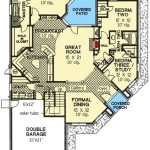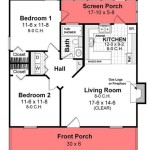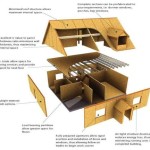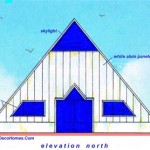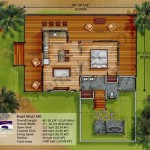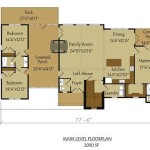Country Cottage House Plans are a set of detailed blueprints and specifications that outline the design and construction of a country cottage home. These plans provide a comprehensive guide for builders, architects, and homeowners to create a charming and cozy house that embodies the essence of countryside living.
Country cottage house plans typically feature traditional architectural elements such as gabled roofs, dormer windows, and stone or brick facades. The interiors often incorporate rustic and cozy details, with exposed beams, fireplaces, and built-in cabinetry. These plans can be customized to suit the specific needs and preferences of homeowners, ensuring that their dream country cottage becomes a reality.
If you’re considering building a country cottage home, it’s essential to choose the right house plans that align with your vision and practical requirements. Let’s delve into the factors to consider when selecting country cottage house plans to help you embark on the journey of creating your perfect country retreat.
When selecting country cottage house plans, consider these important points:
- Architectural style
- Floor plan layout
- Number of bedrooms and bathrooms
- Exterior materials
- Roof type
- Windows and doors
- Budget
- Local building codes
- Sustainability features
These factors will help you find the perfect house plans to create your dream country cottage.
Architectural style
The architectural style of your country cottage will determine its overall look and feel. There are many different country cottage styles to choose from, each with its own unique characteristics. Some of the most popular country cottage styles include:
- Traditional English Cottage: Traditional English cottages are known for their charming and quaint appearance. They typically feature steeply pitched roofs, dormer windows, and stone or brick facades.
Details of traditional English cottage architectural style:
- Steeply pitched roofs with dormer windows
- Stone or brick facades
- Casement windows with diamond-shaped panes
- Thatched roofs (in some cases)
- Charming entryways with arched doorways
- French Country Cottage: French country cottages are known for their elegant and rustic charm. They typically feature hipped roofs, arched windows and doors, and stucco or stone facades.
Details of French country cottage architectural style:
- Hipped roofs
- Arched windows and doors
- Stucco or stone facades
- Wrought iron balconies
- Terracotta tiles
- American Craftsman Cottage: American Craftsman cottages are known for their simple and functional design. They typically feature low-pitched roofs, wide porches, and exposed beams or rafters.
Details of American Craftsman cottage architectural style:
- Low-pitched roofs with wide eaves
- Wide porches with tapered columns
- Exposed beams or rafters
- Built-in cabinetry and furniture
- Natural materials such as wood and stone
- Rustic Cottage: Rustic cottages are known for their cozy and inviting atmosphere. They typically feature log or timber construction, stone fireplaces, and exposed beams.
Details of rustic cottage architectural style:
- Log or timber construction
- Stone fireplaces
- Exposed beams and rafters
- Wood plank floors
- Simple and functional furnishings
When choosing an architectural style for your country cottage, it is important to consider your personal preferences, the surrounding environment, and the local building codes. By carefully considering these factors, you can choose the perfect architectural style for your dream country cottage.
Floor plan layout
The floor plan layout of your country cottage will determine the overall functionality and livability of your home. There are many different floor plan layouts to choose from, each with its own unique advantages and disadvantages.
Some of the most common floor plan layouts for country cottages include:
- Open floor plan: Open floor plans are characterized by their lack of walls or partitions between the living room, dining room, and kitchen. This creates a spacious and airy feel, and it is ideal for entertaining guests or spending time with family.
- Closed floor plan: Closed floor plans have more traditional walls and partitions between rooms. This creates a more private and intimate feel, and it is ideal for those who want to separate different areas of their home.
- Split-level floor plan: Split-level floor plans have different levels that are connected by stairs. This creates a more vertical layout, and it is ideal for homes with limited square footage.
- Ranch floor plan: Ranch floor plans are characterized by their single-story layout. This makes them ideal for those who want a home that is easy to navigate and maintain.
When choosing a floor plan layout for your country cottage, it is important to consider your lifestyle and needs. Do you entertain guests often? Do you have children or pets? Do you need a home that is easy to maintain? By carefully considering your needs, you can choose the perfect floor plan layout for your dream country cottage.
Here are some additional tips for choosing a floor plan layout for your country cottage:
- Consider the size of your family and your lifestyle.
- Think about how you want to use the space.
- Make sure the layout is functional and efficient.
- Consider the flow of traffic through the home.
- Don’t forget to factor in storage space.
By following these tips, you can choose the perfect floor plan layout for your dream country cottage.
Number of bedrooms and bathrooms
The number of bedrooms and bathrooms in your country cottage will depend on your family’s needs and lifestyle. If you have a large family or frequently entertain guests, you may want to consider a cottage with more bedrooms and bathrooms. If you are a couple or empty nester, a smaller cottage with fewer bedrooms and bathrooms may be more suitable.
- Master suite: The master suite is the largest bedroom in the house and typically includes a private bathroom. It is important to choose a master suite that is large enough to accommodate your needs and that has a bathroom that is both functional and luxurious.
- Guest bedrooms: Guest bedrooms are typically smaller than the master suite and may not have private bathrooms. However, it is important to choose guest bedrooms that are comfortable and inviting, as you want your guests to feel welcome and at home.
- Bathrooms: The number of bathrooms in your country cottage will depend on the number of bedrooms and the size of your family. It is important to choose bathrooms that are functional and efficient, and that have fixtures and finishes that you love.
- Other considerations: In addition to the number of bedrooms and bathrooms, you may also want to consider other factors, such as the size of the closets, the of a laundry room, and the location of the bedrooms and bathrooms in relation to the other rooms in the house.
By carefully considering your needs and lifestyle, you can choose the perfect number of bedrooms and bathrooms for your dream country cottage.
Exterior materials
The exterior materials you choose for your country cottage will have a significant impact on the overall look and feel of your home. There are many different exterior materials to choose from, each with its own unique advantages and disadvantages.
Some of the most common exterior materials for country cottages include:
- Wood: Wood is a classic choice for country cottages, and it can be used in a variety of ways, such as siding, shingles, or logs. Wood is a natural material that is both beautiful and durable, and it can be painted or stained to match any style.
- Stone: Stone is another popular choice for country cottages, and it can be used in a variety of ways, such as veneer, cladding, or cobblestone. Stone is a durable and low-maintenance material that can add a touch of rustic charm to your home.
- Brick: Brick is a durable and fire-resistant material that can add a touch of sophistication to your country cottage. Brick can be used in a variety of ways, such as siding, veneer, or pavers.
- Stucco: Stucco is a plaster-like material that can be applied to the exterior of your home to create a smooth, seamless finish. Stucco is a durable and low-maintenance material that can be painted any color.
When choosing exterior materials for your country cottage, it is important to consider the following factors:
- Climate: The climate in your area will play a role in determining which exterior materials are best suited for your home. For example, if you live in a cold climate, you will need to choose materials that are resistant to freezing and thawing.
- Style: The style of your country cottage will also play a role in determining which exterior materials are best suited for your home. For example, if you have a traditional cottage, you may want to choose materials such as wood or stone. If you have a more modern cottage, you may want to choose materials such as stucco or brick.
- Budget: The cost of exterior materials will vary depending on the type of material you choose and the size of your home. It is important to factor in the cost of materials when budgeting for your country cottage.
By carefully considering the climate, style, and budget, you can choose the perfect exterior materials for your dream country cottage.
Roof type
The roof type you choose for your country cottage will have a significant impact on the overall look and feel of your home. There are many different roof types to choose from, each with its own unique advantages and disadvantages.
- Gable roof: Gable roofs are the most common type of roof for country cottages. They are characterized by their two sloping sides that meet at a ridge at the top of the roof. Gable roofs are a good choice for cottages in areas with moderate climates, as they are able to shed water and snow easily.
Details of gable roof:
- Two sloping sides that meet at a ridge at the top of the roof
- Good for cottages in areas with moderate climates
- Able to shed water and snow easily
- Hipped roof: Hipped roofs are characterized by their four sloping sides that meet at a point at the top of the roof. Hipped roofs are a good choice for cottages in areas with high winds, as they are more resistant to damage than gable roofs.
Details of hipped roof:
- Four sloping sides that meet at a point at the top of the roof
- Good for cottages in areas with high winds
- More resistant to damage than gable roofs
- Gambrel roof: Gambrel roofs are characterized by their two sloping sides that meet at a ridge at the top of the roof, and then two additional sloping sides that meet at a lower ridge. Gambrel roofs are a good choice for cottages in areas with cold climates, as they provide additional insulation.
Details of gambrel roof:
- Two sloping sides that meet at a ridge at the top of the roof
- Two additional sloping sides that meet at a lower ridge
- Good for cottages in areas with cold climates
- Provide additional insulation
- Mansard roof: Mansard roofs are characterized by their four sloping sides that meet at a point at the top of the roof, and then two additional sloping sides that meet at a lower ridge. Mansard roofs are a good choice for cottages in areas with a lot of snow, as they are able to shed snow easily.
Details of mansard roof:
- Four sloping sides that meet at a point at the top of the roof
- Two additional sloping sides that meet at a lower ridge
- Good for cottages in areas with a lot of snow
- Able to shed snow easily
When choosing a roof type for your country cottage, it is important to consider the following factors:
- Climate: The climate in your area will play a role in determining which roof type is best suited for your home. For example, if you live in an area with high winds, you will need to choose a roof type that is resistant to damage.
- Style: The style of your country cottage will also play a role in determining which roof type is best suited for your home. For example, if you have a traditional cottage, you may want to choose a roof type such as a gable roof or a hipped roof. If you have a more modern cottage, you may want to choose a roof type such as a gambrel roof or a mansard roof.
- Budget: The cost of different roof types will vary depending on the materials used and the size of your home. It is important to factor in the cost of the roof when budgeting for your country cottage.
By carefully considering the climate, style, and budget, you can choose the perfect roof type for your dream country cottage.
Windows and doors
The windows and doors of your country cottage will play a major role in determining the overall look and feel of your home. There are many different window and door styles to choose from, each with its own unique advantages and disadvantages. Here are some of the most common window and door styles for country cottages:
Windows
- Casement windows: Casement windows are hinged on one side and open outward. They are a popular choice for country cottages because they provide excellent ventilation and natural light. Casement windows can be single or double hung, and they can be made from a variety of materials, such as wood, vinyl, or aluminum.
Details of casement windows:
- Hinged on one side and open outward
- Provide excellent ventilation and natural light
- Can be single or double hung
- Can be made from a variety of materials, such as wood, vinyl, or aluminum
- Double-hung windows: Double-hung windows have two sashes that slide up and down. They are a good choice for country cottages because they are easy to operate and provide good ventilation. Double-hung windows can be made from a variety of materials, such as wood, vinyl, or aluminum.
Details of double-hung windows:
- Two sashes that slide up and down
- Easy to operate and provide good ventilation
- Can be made from a variety of materials, such as wood, vinyl, or aluminum
- Awning windows: Awning windows are hinged at the top and open outward. They are a good choice for country cottages because they provide excellent ventilation and can be used to create a shaded area. Awning windows can be made from a variety of materials, such as wood, vinyl, or aluminum.
Details of awning windows:
- Hinged at the top and open outward
- Provide excellent ventilation and can be used to create a shaded area
- Can be made from a variety of materials, such as wood, vinyl, or aluminum
- Bay windows: Bay windows are a type of projecting window that creates a small alcove in a room. They are a popular choice for country cottages because they provide excellent natural light and can be used to create a cozy seating area. Bay windows can be made from a variety of materials, such as wood, vinyl, or aluminum.
Details of bay windows:
- A type of projecting window that creates a small alcove in a room
- Provide excellent natural light and can be used to create a cozy seating area
- Can be made from a variety of materials, such as wood, vinyl, or aluminum
Doors
- Front door: The front door of your country cottage is a focal point of your home, so it is important to choose a door that is both beautiful and functional. There are many different front door styles to choose from, so you can find one that matches the style of your home and your personal taste.
Details of front door:
- A focal point of your home, so it is important to choose a door that is both beautiful and functional
- Many different front door styles to choose from
- Choose one that matches the style of your home and your personal taste
- Back door: The back door of your country cottage is typically used for everyday access, so it is important to choose a door that is durable and easy to operate. There are many different back door styles to choose from, so you can find one that matches the style of your home and your personal taste.
Details of back door:
- Typically used for everyday access, so it is important to choose a door that is durable and easy to operate
- Many different back door styles to choose from
- Choose one that matches the style of your home and your personal taste
- French doors: French doors are a type of double door that is typically made from glass. They are a popular choice for country cottages because they provide excellent natural light and can be used to create a seamless transition between indoors and outdoors. French doors can be made from a variety of materials, such as wood, vinyl, or aluminum.
Details of French doors:
- A type of double door that is typically made from glass
- Provide excellent natural light and can be used to create a seamless transition between indoors and outdoors
- Can be made from a variety of materials, such as wood, vinyl, or aluminum
- Sliding glass doors: Sliding glass doors are a type of door that slides open and closed. They are a popular choice for country cottages because they provide excellent natural light and can be used to create a seamless transition between indoors and outdoors. Sliding glass doors can be made from a variety of materials, such as wood, vinyl, or aluminum.
Details of sliding glass doors:
- A type of door that slides open and closed
- Provide excellent natural light and can be used to create a seamless transition between indoors and outdoors
- Can be made from a variety of materials, such as wood, vinyl, or aluminum
When choosing windows and doors for your country cottage, it is important to consider the following factors:
- Style: The style of your country cottage will play a major role in determining the type of windows and doors you choose. For example, if you have a traditional cottage, you may want to choose windows and doors with a classic design. If you have a more modern cottage, you may want to choose windows and doors with a more contemporary design.
- Climate: The climate in your area will also play a role in determining the type of windows and doors you choose. For example, if you live in a cold climate, you will need to choose windows and doors that are energy-efficient and can withstand the elements.
- Budget: The cost of windows and doors will vary depending on the materials used and the size of your home. It is important to factor in the cost of windows and doors when budgeting for your country cottage.
By carefully considering the style, climate, and budget, you can choose the perfect windows and doors for your dream country cottage.
Budget
When planning your country cottage, it’s crucial to consider your budget. Here are some key factors that will impact the cost of your project:
- Size of the cottage: The larger the cottage, the higher the cost of materials and labor. Consider your space requirements carefully to optimize your budget.
- Materials: The materials you choose for the exterior and interior of your cottage will significantly impact the cost. Natural materials like stone and wood tend to be more expensive than synthetic materials.
- Labor costs: The cost of labor will vary depending on your location and the complexity of your project. Hiring experienced contractors may increase the cost, but it ensures quality workmanship.
- Permits and inspections: Factor in the costs associated with obtaining building permits and inspections. These fees vary by municipality and are essential for ensuring your cottage meets safety and building codes.
It’s important to research and compare costs to make informed decisions and avoid unexpected expenses during the construction process. Setting a realistic budget will help you plan and prioritize your spending, ensuring that your dream country cottage becomes a reality within your financial means.
Local building codes
Local building codes play a crucial role in ensuring the safety and structural integrity of your country cottage. These codes establish minimum standards for construction, materials, and design. Adhering to these codes is not only legally required but also essential for the well-being of your family and the longevity of your home.
- Zoning regulations: Zoning codes determine the permissible uses of land and the types of structures allowed in specific areas. They may restrict the size, height, and placement of your cottage on your property.
- Building codes: Building codes set forth detailed requirements for the construction of your cottage, including structural elements, electrical systems, plumbing, and fire safety measures. These codes ensure that your home is built to withstand local environmental conditions and meets minimum safety standards.
- Energy efficiency codes: Energy efficiency codes promote sustainable building practices and reduce energy consumption. They may mandate the use of energy-efficient appliances, insulation, and building materials to minimize your cottage’s environmental impact and lower utility costs.
- Accessibility codes: Accessibility codes ensure that your cottage is accessible to individuals with disabilities. They may require features such as ramps, wider doorways, and accessible bathrooms to accommodate the needs of all occupants.
Understanding and complying with local building codes is essential for obtaining building permits and ensuring the safety and legality of your country cottage. Working with an experienced architect or contractor can help you navigate these codes and design a cottage that meets all applicable requirements.
Sustainability features
Incorporating sustainable features into your country cottage house plans can minimize environmental impact, promote energy efficiency, and enhance the overall well-being of your home.
- Energy-efficient appliances and systems: Choosing energy-efficient appliances, lighting, and heating and cooling systems can significantly reduce your cottage’s energy consumption. Look for ENERGY STAR-certified products that meet strict energy efficiency standards, helping you save money on utility bills and contribute to a greener environment.
- Renewable energy sources: Consider integrating renewable energy sources such as solar panels or geothermal heating and cooling systems. These systems harness natural resources to generate electricity or regulate temperature, reducing reliance on fossil fuels and promoting sustainable living.
- Sustainable building materials: Opt for sustainably sourced and recycled building materials, such as bamboo flooring, reclaimed wood, or low-VOC (volatile organic compound) paints and finishes. These materials minimize environmental impact, improve indoor air quality, and contribute to a healthier living environment.
- Water conservation measures: Implement water-saving fixtures, such as low-flow toilets and faucets, to reduce water usage. Additionally, consider rainwater harvesting systems to collect and store rainwater for non-potable purposes like irrigation or washing, further conserving this precious resource.
By incorporating these sustainability features into your country cottage house plans, you can create a home that is not only charming and comfortable but also environmentally responsible, ensuring a healthier and more sustainable future for you and generations to come.










Related Posts

